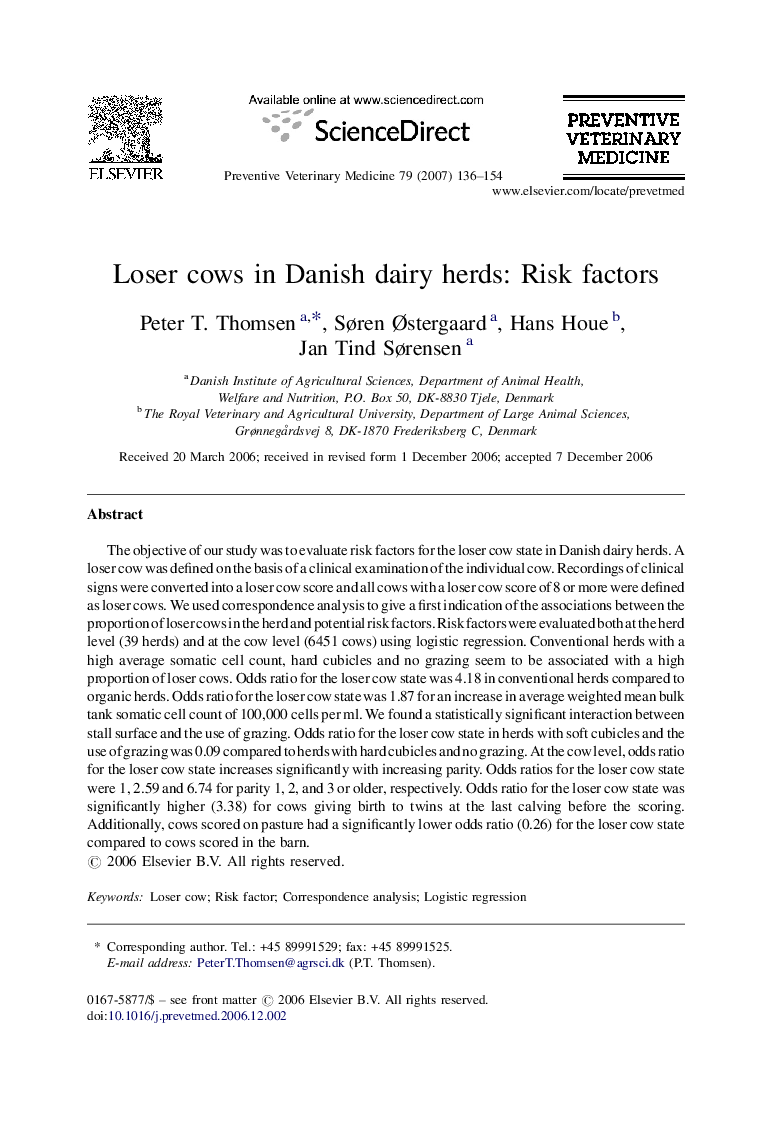| Article ID | Journal | Published Year | Pages | File Type |
|---|---|---|---|---|
| 2453518 | Preventive Veterinary Medicine | 2007 | 19 Pages |
Abstract
The objective of our study was to evaluate risk factors for the loser cow state in Danish dairy herds. A loser cow was defined on the basis of a clinical examination of the individual cow. Recordings of clinical signs were converted into a loser cow score and all cows with a loser cow score of 8 or more were defined as loser cows. We used correspondence analysis to give a first indication of the associations between the proportion of loser cows in the herd and potential risk factors. Risk factors were evaluated both at the herd level (39 herds) and at the cow level (6451 cows) using logistic regression. Conventional herds with a high average somatic cell count, hard cubicles and no grazing seem to be associated with a high proportion of loser cows. Odds ratio for the loser cow state was 4.18 in conventional herds compared to organic herds. Odds ratio for the loser cow state was 1.87 for an increase in average weighted mean bulk tank somatic cell count of 100,000Â cells per ml. We found a statistically significant interaction between stall surface and the use of grazing. Odds ratio for the loser cow state in herds with soft cubicles and the use of grazing was 0.09 compared to herds with hard cubicles and no grazing. At the cow level, odds ratio for the loser cow state increases significantly with increasing parity. Odds ratios for the loser cow state were 1, 2.59 and 6.74 for parity 1, 2, and 3 or older, respectively. Odds ratio for the loser cow state was significantly higher (3.38) for cows giving birth to twins at the last calving before the scoring. Additionally, cows scored on pasture had a significantly lower odds ratio (0.26) for the loser cow state compared to cows scored in the barn.
Related Topics
Life Sciences
Agricultural and Biological Sciences
Animal Science and Zoology
Authors
Peter T. Thomsen, Søren Ãstergaard, Hans Houe, Jan Tind Sørensen,
